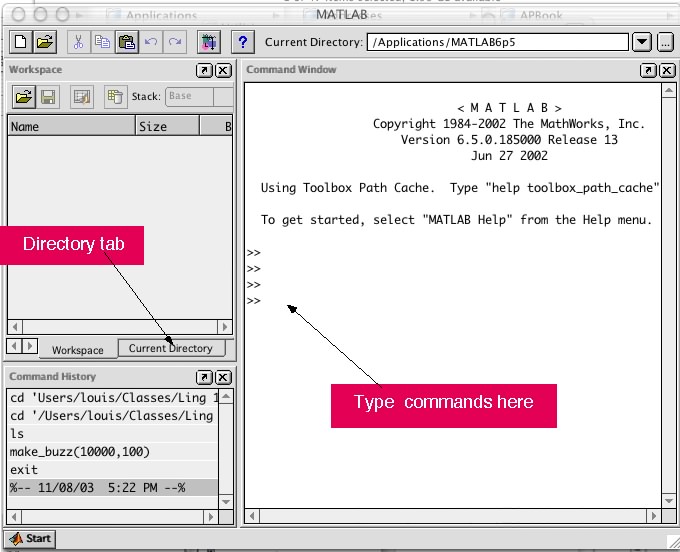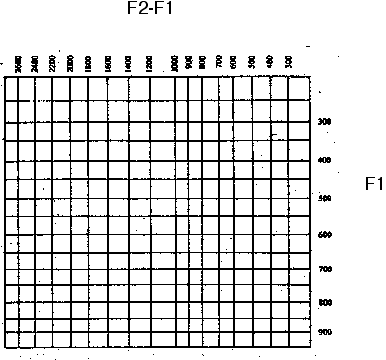
Linguistics 580a
General Phonetics
(1) to develop some familiarity with the relationship between articulatory parameters relevant to the production of vowels and their acoustic consequences.
(2) to learn how to distinguish particular vowels in terms of
articulatory parameters.
The articulators that can be moved are shown by little '+' markers on the Vocal Tract Display. They are labelled in Figure 1.

The articulators can be moved by positioning the mouse pointer over one of these markers, then holding down the button and dragging it to a new position. While you are dragging, you will not see anything, but when you release the button, the articulator will move and the vocal tract shape will be updated appropriately. A new filter function and formants will also be displayed, and a new sound can be played.
The articulator positions are defined relative to one another in a dependence hierarchy. The lower lip, tongue body, and tongue tip are dependent on the position of the jaw, so when the jaw moves, these articulators more along with it. The tongue tip is dependent on the position of the tongue body. The upper lip is dependent on the position of the lower lip.
For this exercise with vowels, you should be able to produce decent approximations to English vowels by manipulating only the jaw, tongue body, and lips.
This homework has to be done in the Phonetics Lab or at some computer that has the Matlab language available. If you have Matlab available, you can download CASY here.
(a) Create a folder on the desktop with your name.
(b) Lauch the application MATLAB. There should be an icon on the dock.
(c) Matlab will open a window that looks something like Figure 2. Commands can be typed in the large panel at the >> prompt.

Figure 2
(d) The first thing to do is to set Matlab's current directory to the folder you just created. To do so, drag the icon for the your folder onto the command line.
(e) Type casy at the Matlab prompt. Three windows will appear: Vocal Tract, Spectrum (Transfer Function), and Area Function. The vocal tract spectrum should look like that in Figure 1 (without the identification labels). You will not need the Area Function window, so you can click the yellow button at the top left to minimize it. The spectrum window shows the filter function associated with the vocal tract shape shown, and the frequencies of the formants are listed.
(f) To hear the sound that the vocal tract generates, type p <return> at the Matlab prompt..
(g) Manipulate the articulators to produce reasonable approximations to the following English vowels:
Attempt to generate the palatal vowels as suggested by the quantal vowel theory.
(h) When you have a good approximation to a given vowel, type >>saveKey(‘name’); where ‘name’ is, e.g., ‘heed’, ‘hid’, etc. You need to actually put single quotes around the name. For example:
>>saveKey(‘heed’)
This will save the articulator positions in a file called <name>.mat. (Leave the apostrophe out of "who'd.")
(i) If you get stuck at any point, type casy again to reinitialize the shape to the default neutral shape.
(j) To load a saved file, type loadKey(‘name’).
(k) The saved files should all be in your folder. Zip the folder and email it to me, or email me the eight individual files.
(l) Plot the resulting formant frequencies in the vowel chart below (or do so in some plotting program):
